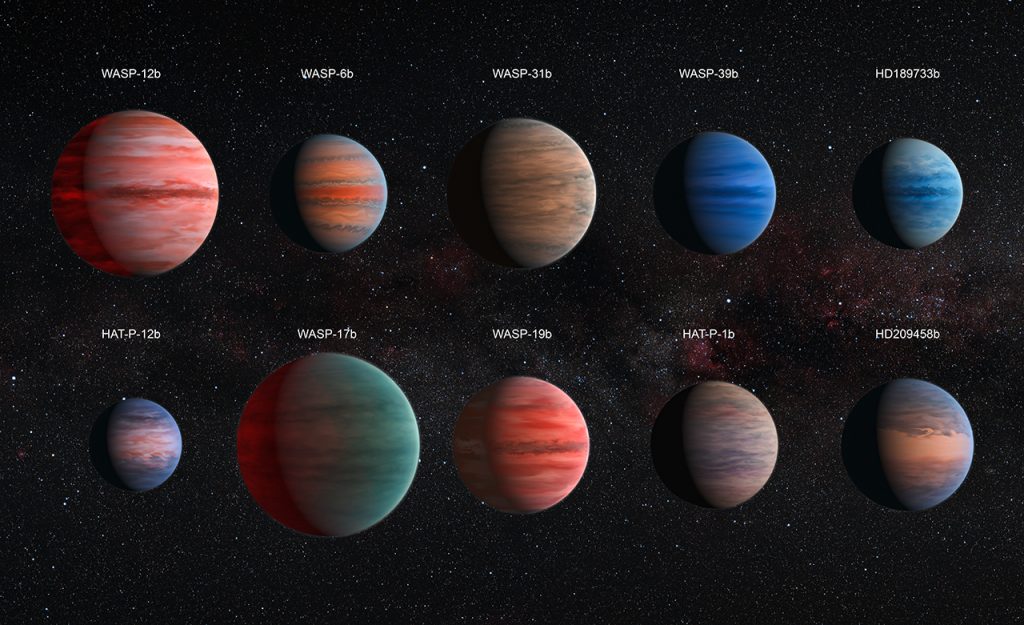Featured
- Get link
- X
- Other Apps
Exoplanet Astronomy
Exoplanet Astronomy: Exploring the Worlds Beyond our Solar System
Introduction:
Exoplanet astronomy is a dynamic and rapidly growing field of study that focuses on the discovery, characterization, and understanding of planets beyond our solar system. For centuries, the question of whether planets exist around other stars remained unanswered, but technological advancements and observational techniques have allowed astronomers to detect and study these distant worlds. In this article, we will delve into the fascinating world of exoplanet astronomy, exploring its key concepts, advancements, and contributions to our understanding of the universe.
The Quest for Exoplanets:
The search for exoplanets began in earnest in the 1990s with the development of precise radial velocity and transit techniques. Radial velocity measurements detect the gravitational tug of an orbiting planet on its parent star, causing slight shifts in the star's spectral lines. Transit observations involve detecting the periodic dimming of a star as a planet passes in front of it, blocking a small fraction of its light. These methods have revolutionized our ability to detect and characterize exoplanets, leading to the discovery of thousands of worlds beyond our solar system.
Exoplanet Detection Methods:
Exoplanet astronomers employ several methods to detect and confirm the presence of exoplanets. In addition to the radial velocity and transit techniques mentioned earlier, other methods include:
1. Direct Imaging: Advanced imaging techniques and instruments enable the detection and characterization of exoplanets by directly capturing their light separate from their host star. This method is challenging due to the significant contrast between the planet and its bright parent star.
2. Microlensing: Microlensing occurs when the gravity of a foreground star magnifies the light of a more distant star, including any planets that might orbit it. This technique can detect planets in wider orbits, but it requires fortuitous alignments and careful observations.
3. Astrometry: Astrometry measures the tiny wobbles in a star's position caused by the gravitational pull of an orbiting planet. This method is particularly effective for detecting massive planets in wide orbits.
4. Gravitational Microlensing: Gravitational microlensing occurs when the gravity of a foreground object, such as a star, bends and magnifies the light of a more distant star. The presence of a planet orbiting the foreground star can cause additional deviations in the magnified light, providing valuable information about the planet's properties.
Characterizing Exoplanets:
Exoplanet astronomy aims to characterize the physical and atmospheric properties of these distant worlds. Spectroscopy plays a crucial role in this process, as it allows astronomers to analyze the composition of exoplanet atmospheres by studying the absorption and emission of light at different wavelengths. By examining these spectral signatures, scientists can infer the presence of molecules, such as water, methane, carbon dioxide, and even signs of potential habitability.
Habitable Zones and the Search for Life:
One of the most intriguing aspects of exoplanet astronomy is the search for potentially habitable exoplanets. Habitable zones, also known as Goldilocks zones, are regions around a star where conditions might be favorable for the existence of liquid water—a key ingredient for life as we know it. Scientists study the temperature, proximity to the star, and composition of exoplanets to determine their potential habitability.
The search for life beyond Earth is a primary focus of exoplanet astronomy. While the detection of extraterrestrial life remains elusive, astronomers are refining techniques to search for biosignatures—chemical signatures indicative of life—in the atmospheres of exoplanets. These biosignatures include the presence of oxygen, methane, and other gases that could be produced by living organisms.
Exoplanet Diversity and Surprising Discoveries:
Exoplanet astronomy has unveiled a remarkable diversity of worlds. From
hot Jupiters—giant gas planets orbiting close to their stars—to super-Earths—rocky planets larger than Earth—our understanding of planetary systems has expanded significantly. Some exoplanets exhibit peculiar characteristics, such as "hot ice" planets with high-pressure ice mantles and "diamond planets" with carbon-rich compositions.
The discoveries of exoplanets have also challenged existing theories of planetary formation and migration. The presence of massive planets in close orbits raises questions about their formation so close to their stars. The observation of multiple-planet systems, resonant orbits, and planetary migrations provide valuable insights into the complex processes involved in the formation and evolution of planetary systems.
Future Directions and the Search for Earth-like Worlds:
The field of exoplanet astronomy is continuously evolving, driven by technological advancements and space missions dedicated to exoplanet exploration. Future telescopes and instruments, such as the James Webb Space Telescope (JWST), will revolutionize our ability to characterize exoplanet atmospheres and potentially detect signs of life.
Furthermore, upcoming missions like the Transiting Exoplanet Survey Satellite (TESS) and the European Space Agency's PLATO mission will continue to discover new exoplanets, particularly those in the habitable zones of their host stars. These missions will provide valuable data for further studies and the search for Earth-like worlds.
Conclusion:
Exoplanet astronomy has revolutionized our understanding of planetary systems and the potential for life beyond our solar system. Through various detection methods and characterization techniques, astronomers are discovering a multitude of diverse exoplanets, expanding our knowledge of the cosmos. As technology advances and our observational capabilities improve, the search for potentially habitable worlds and the exploration of exoplanet atmospheres will continue to captivate our imagination and reshape our understanding of the possibilities that lie beyond our home planet.
- Get link
- X
- Other Apps

Comments
Post a Comment